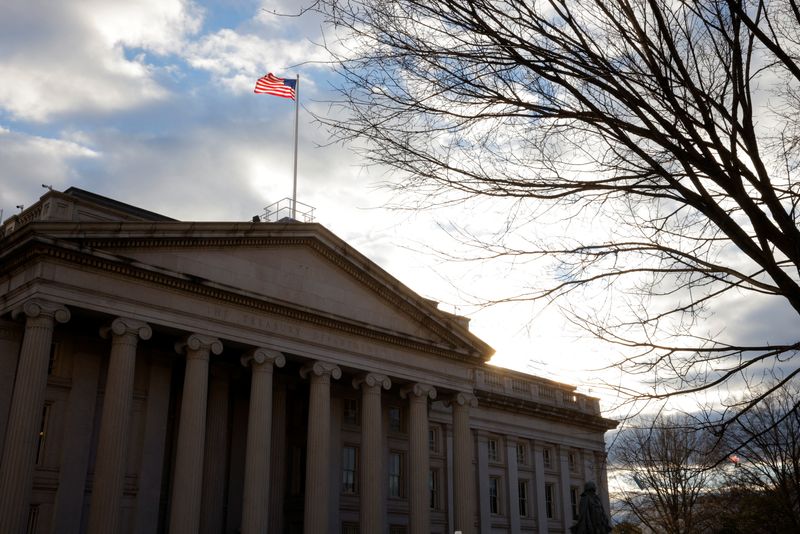By David Lawder
WASHINGTON (Reuters) -No major U.S. trading partner manipulated its currency in the year to June 30, the Treasury Department said on Thursday in the Biden administration’s final semi-annual currency report before turning over policing of foreign exchange practices to President-elect Donald Trump.
Trump, who has frequently complained that the strong dollar is eroding U.S. trade competitiveness, ended his first term in the White House with Treasury declarations of Vietnam and Switzerland as currency manipulators in December 2020 over their market interventions to weaken the value of their currencies.
Trump also directed then-Treasury Secretary Steven Mnuchin to label China a currency manipulator in August 2019, a move made at the height of U.S.-China trade tensions. The Treasury Department dropped the designation in January 2020 as Chinese officials arrived in Washington to sign a trade deal with the U.S.
For much of the past four years, however, foreign exchange interventions by U.S. trading partners have moved in the opposite direction, to push up the values of their currencies against the dollar, mainly to fight inflation.
President Joe Biden’s term will end with the Treasury Department having made no manipulation declarations, but frequently raising concerns about China’s foreign exchange practices in its semi-annual currency reports.
The department’s latest analysis found that for the four quarters ended June 30, no major U.S. trading partners met all three criteria for “enhanced analysis” of their currency practices. That process leads to intensive consultations and can ultimately produce trade sanctions.
The Treasury Department said China, Japan, South Korea, Taiwan, Singapore, Vietnam and Germany were on its “monitoring list” for extra foreign exchange scrutiny. Malaysia, which was on the previous report’s list, dropped off, while South Korea was added due to its large global current account surplus and its sizable goods and services trade deficit with the U.S.
Countries that meet two of the criteria – a trade surplus with the U.S. of at least $15 billion, a global account surplus above 3% of GDP, and persistent, one-way net foreign exchange purchases – are automatically added to the list.
CHINA DISCREPANCIES
China was kept on the monitoring list because of its large trade surplus with the U.S. and because of a lack of transparency surrounding its foreign exchange policies, the Treasury Department said.
The report noted that despite a slight decline in China’s current account balance to 1.2% of GDP, its export volumes had risen sharply, indicating a decline in export prices. It said that trend continued beyond the monitoring period to the third quarter of 2024.
“Partially as a result of weak domestic demand, China has increasingly relied on foreign demand to drive growth this year, with net exports contributing an unusually high share (43%) of real growth in the third quarter,” the report said. “Thus, while the reported current account surplus is not material, the rapidly growing export volumes amid falling prices will likely have large impacts on China’s trading partners.”
The report also reiterated a call for more transparency in China’s foreign exchange practices, including use of a daily fix to prevent weakening of the yuan without official explanation. It said these policies “make China an outlier among major economies and warrant Treasury’s close monitoring.”
Trump has vowed to impose tariffs of at least 60% on imported Chinese goods, regardless of Beijing’s currency practices, and wants a 10%-20% duty on imports from the rest of the world.
The currency report said Japan was kept on the monitoring list because of its $65 billion trade surplus with the U.S. during the review period as well as an increase in its global current account surplus to 4.2% of GDP from 2% a year earlier.
The Treasury Department said Japan’s Ministry of Finance had intervened three times since April to shore up the yen’s value: on April 29, May 1 and July 11-12. It noted that Japan’s actions were transparent, but reiterated that intervention “should be reserved only for very exceptional circumstances without prior consultations.

